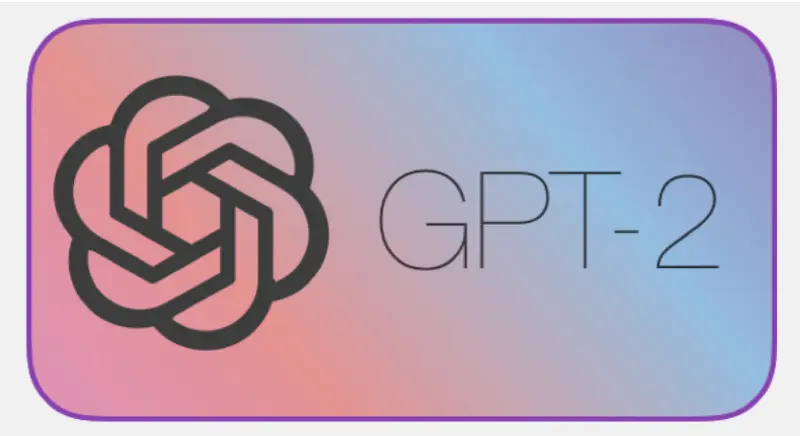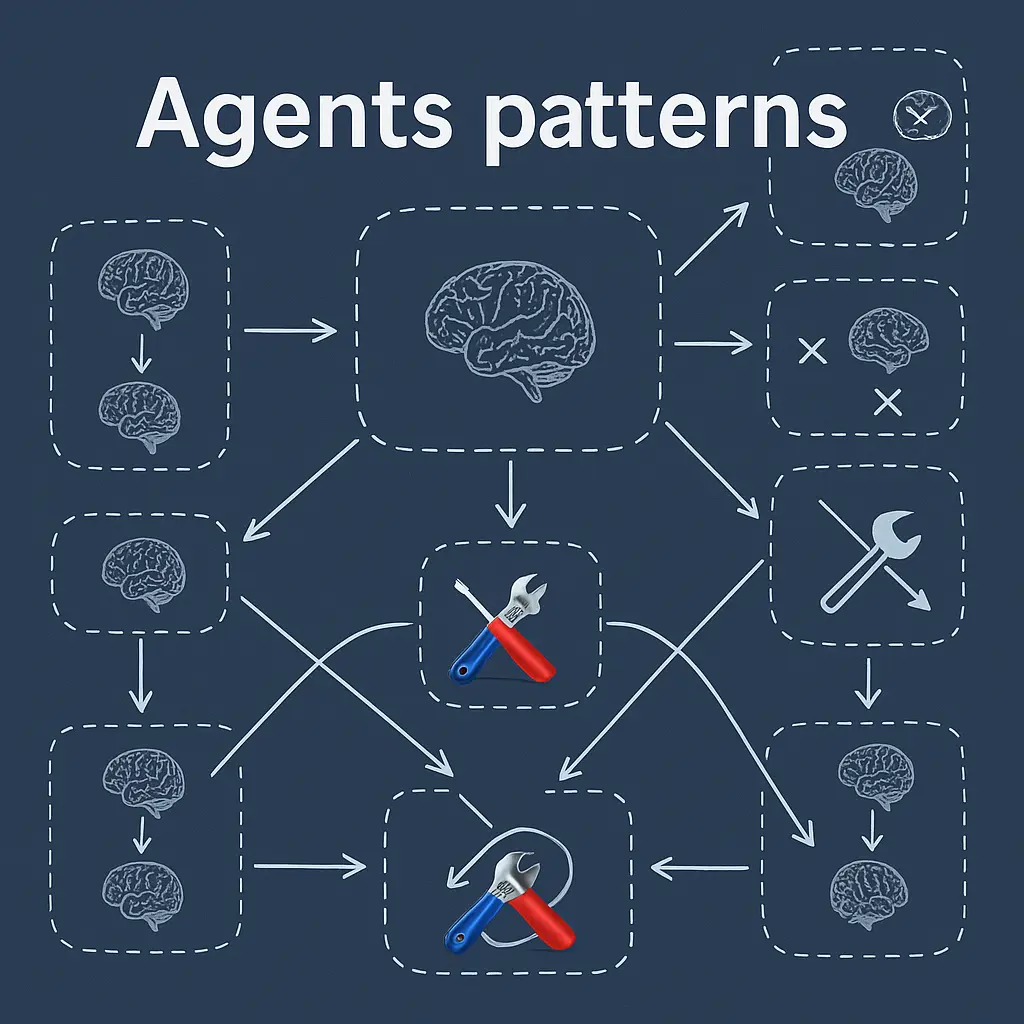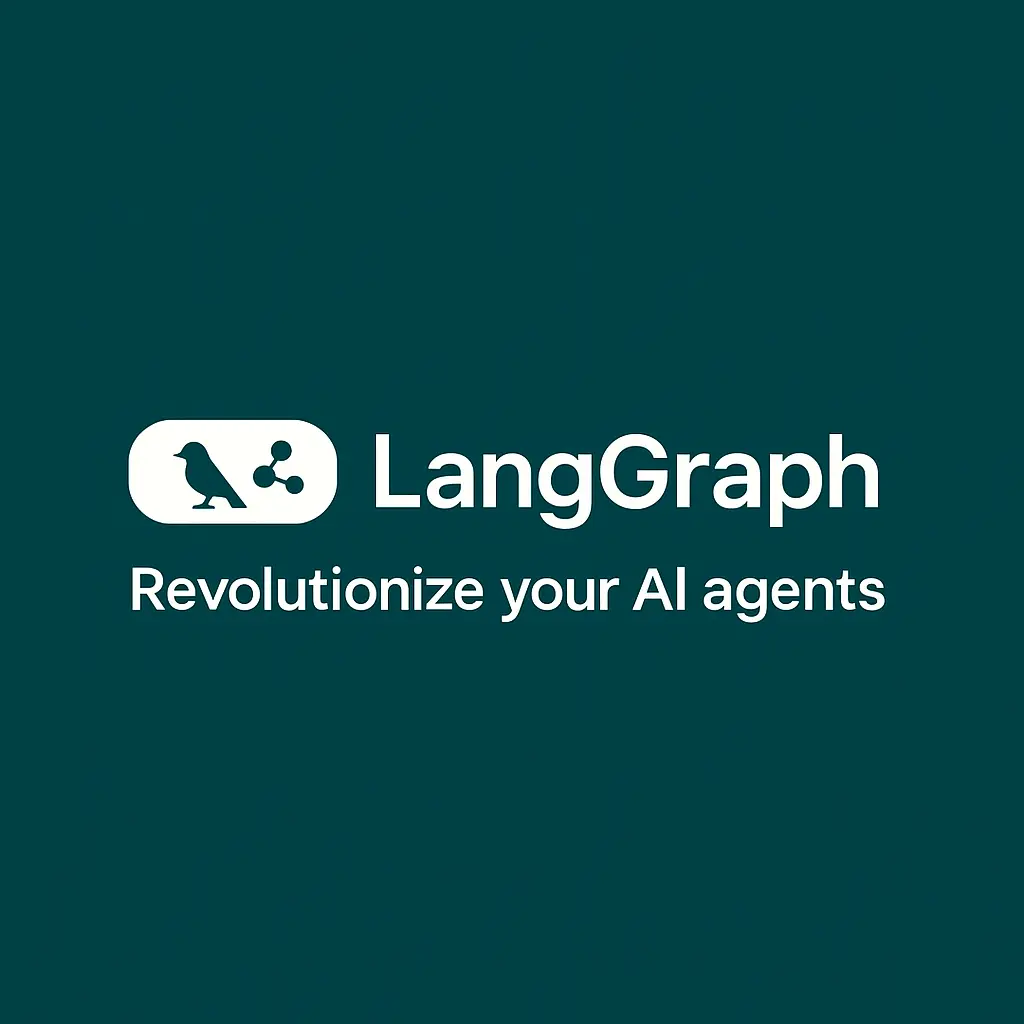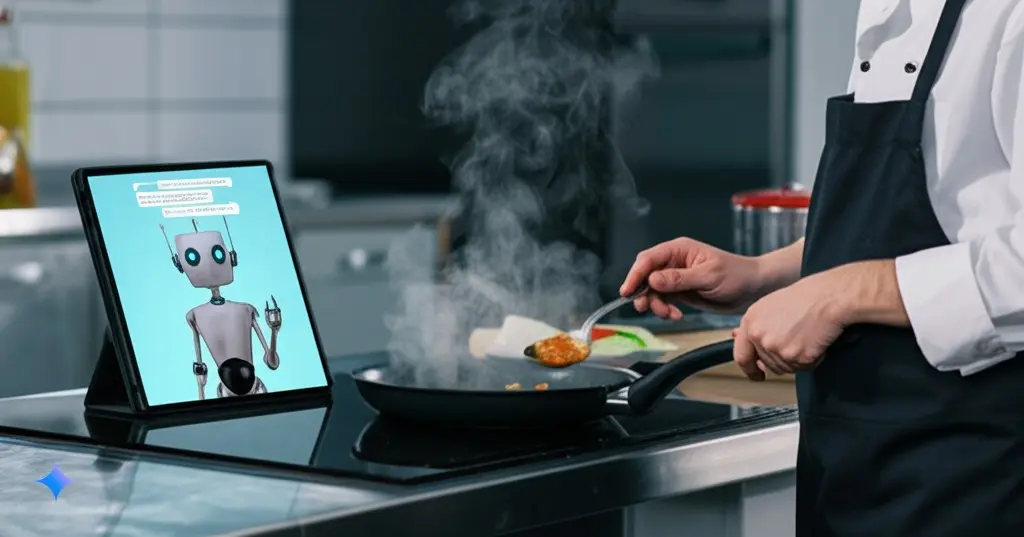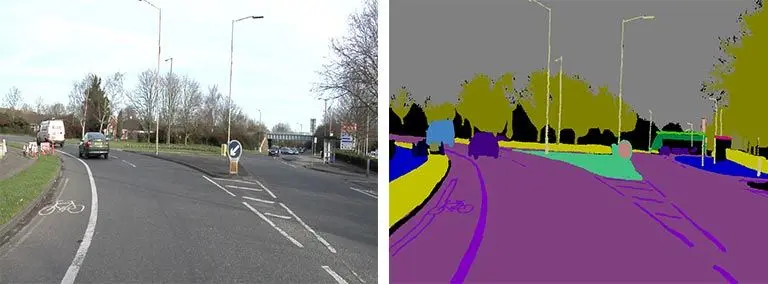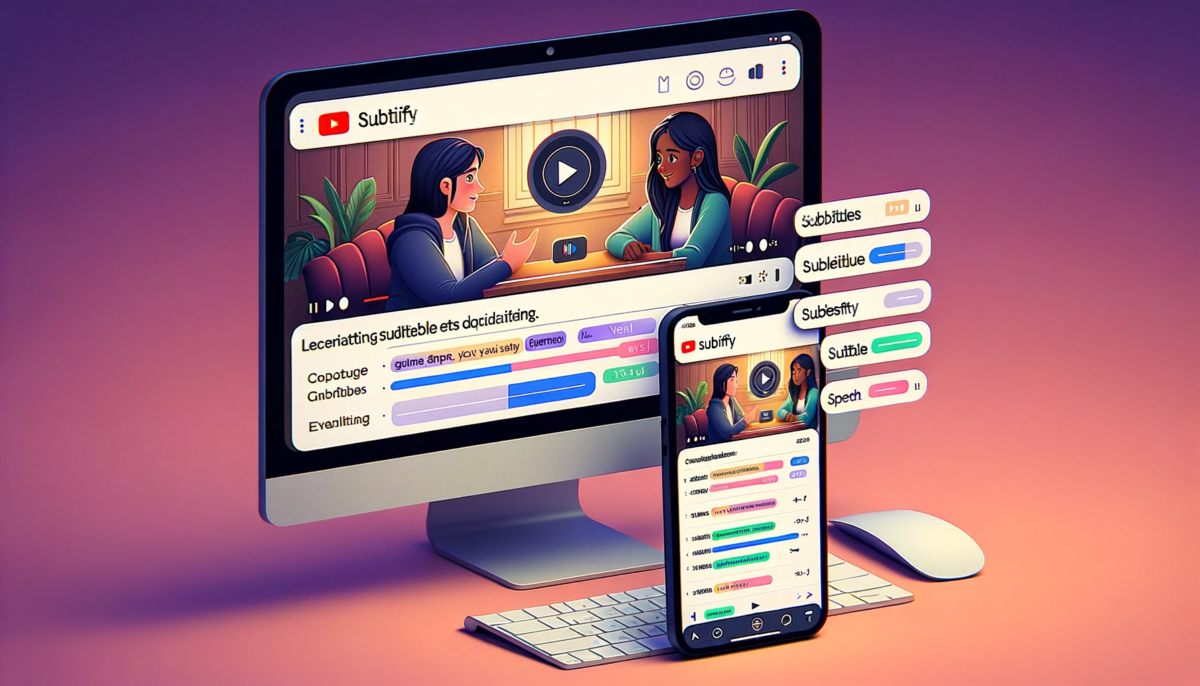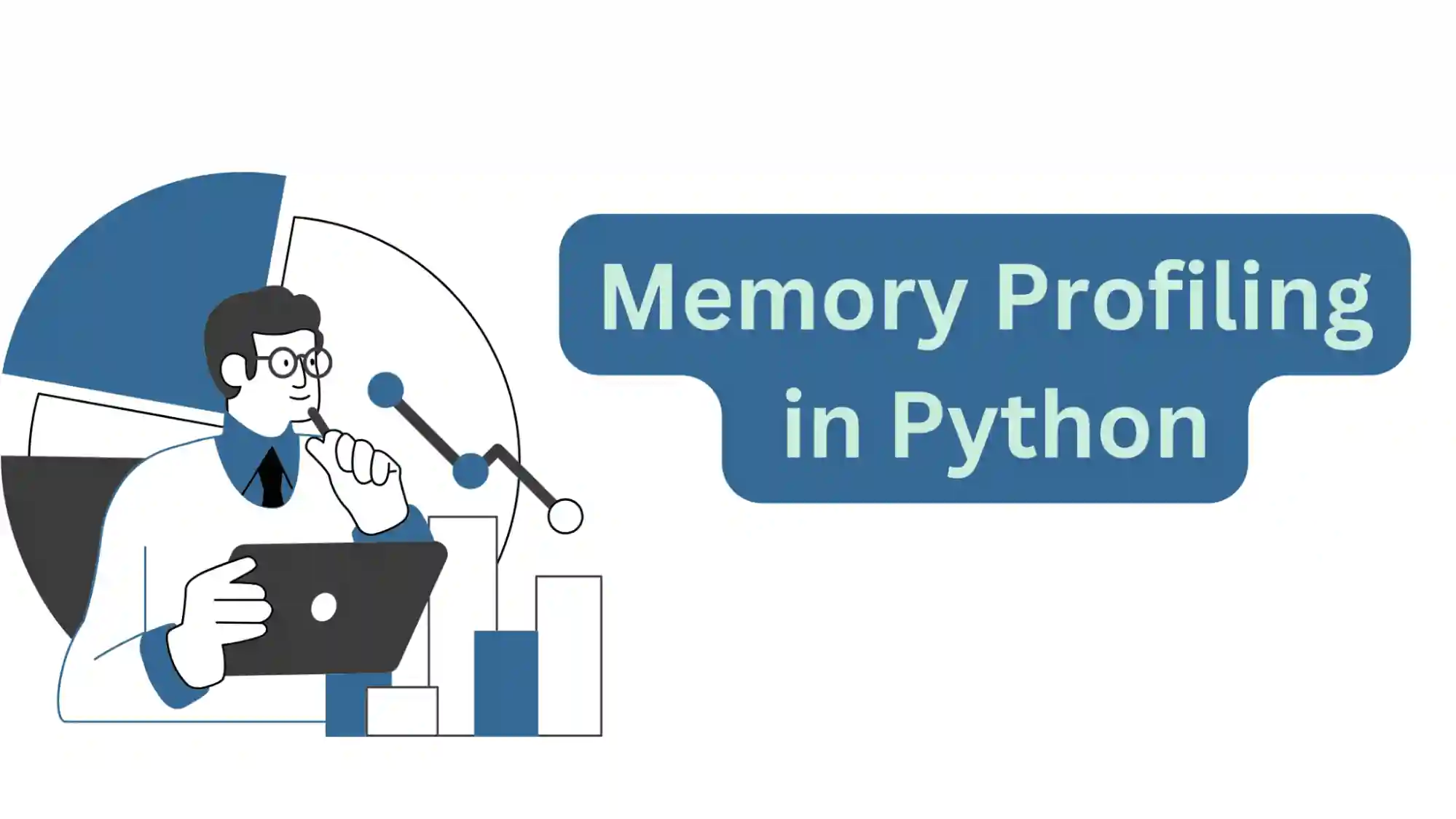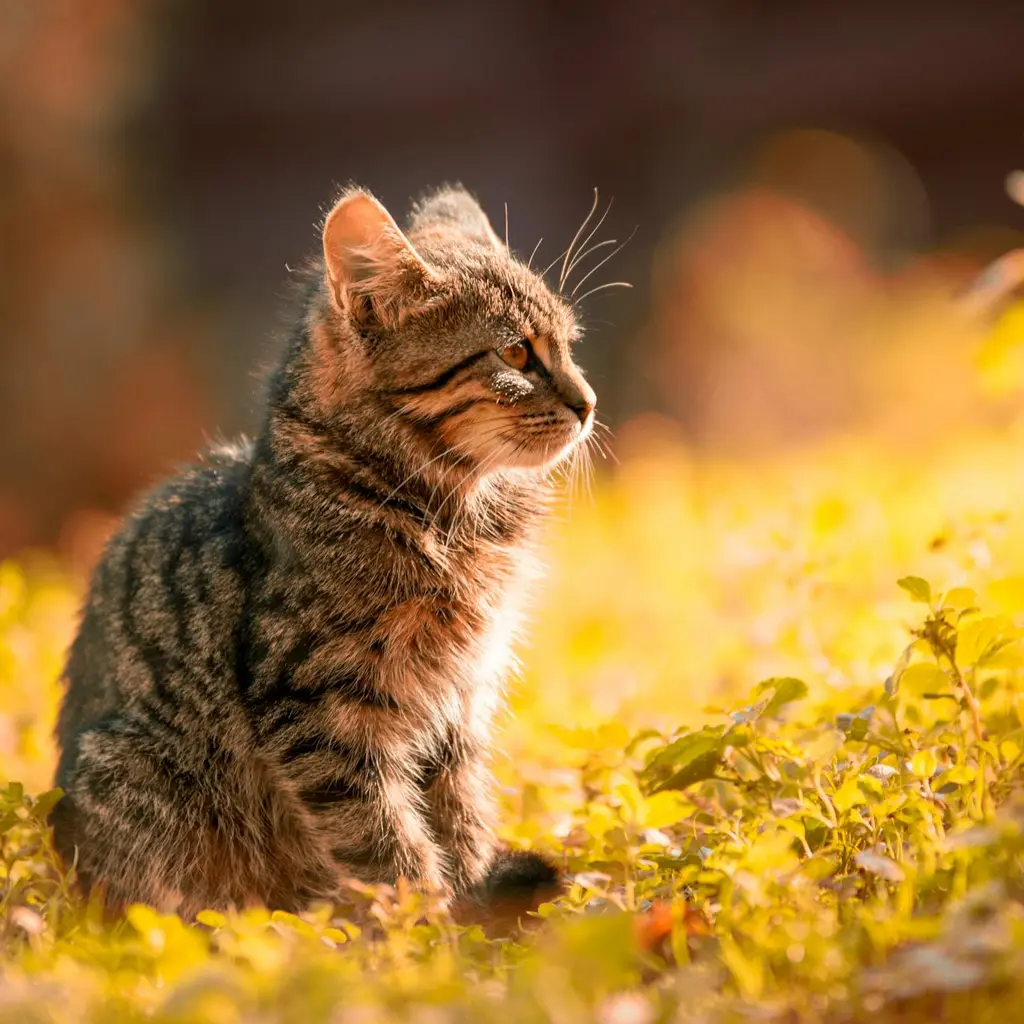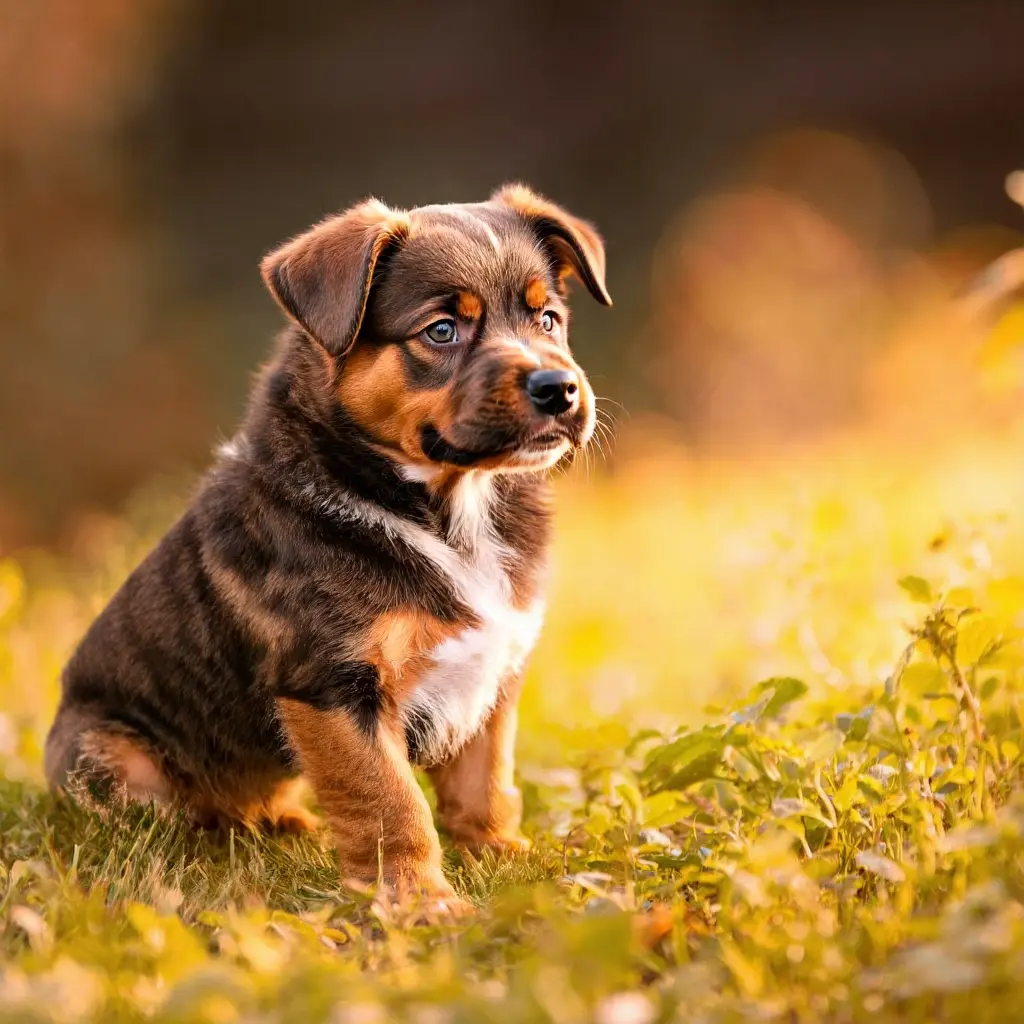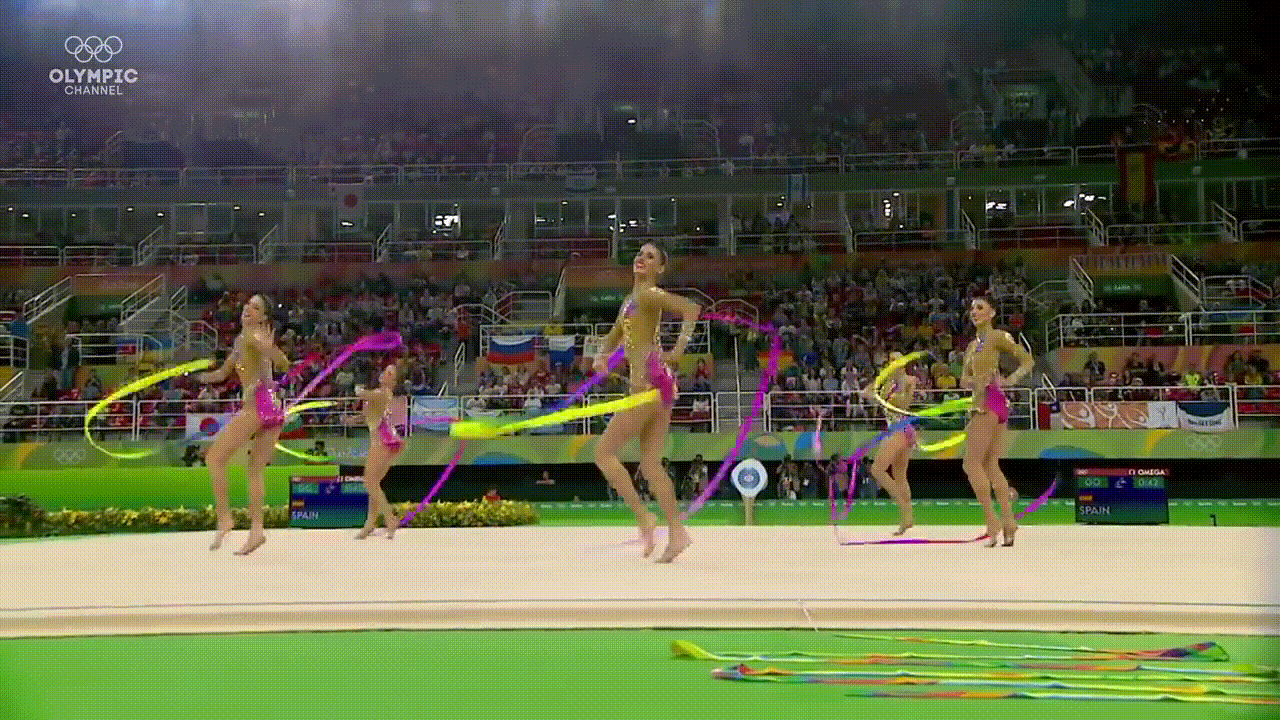GPT-2 - Language Models are Unsupervised Multitask Learners
Paper
This notebook has been automatically translated to make it accessible to more people, please let me know if you see any typos.
Language Models are Unsupervised Multitask Learners is the GPT-2 paper. This is the second version of the model GPT-1 that we have already seen.
Architecture
Before we talk about the GPT-2 architecture, let's remember what the GPT-1 architecture was like.
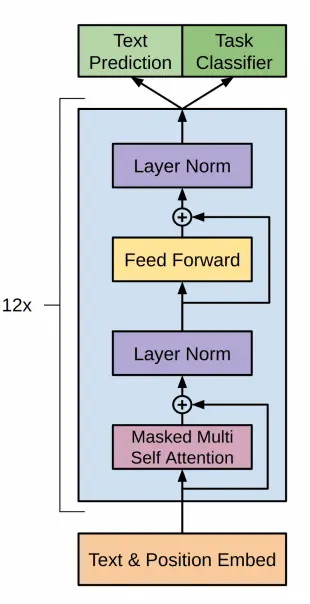
GPT-2 uses a transformer-based architecture, the same as GPT-1, with the following sizes
| Parameters | Layers | d_model |
|---|---|---|
| 117M | 12 | 768 |
| 345M | 24 | 1024 |
| 762M | 36 | 1280 |
| 1542M | 48 | 1600 |
The smaller model is equivalent to the original GPT, and the second smaller model is equivalent to the larger BERT model. The larger model has more than an order of magnitude more parameters than GPT.
In addition, the following architectural modifications were made
- A normalization layer is added before the attention block. This can help stabilize the training of the model and improve its ability to learn deeper representations. By normalizing the inputs to each block, variability in the outputs is reduced and model training is facilitated.
- An additional normalization has been added after the final self-attenuation block. This can help reduce variability in model outputs and improve model stability.
- In most models, the weights of the layers are initialized randomly, following a normal or uniform distribution. However, in the case of GPT-2, the authors decided to use a modified initialization that takes into account the depth of the model.The idea behind this modified initialization is that as the model gets deeper, the signal flowing through the residual layers becomes weaker. This is because each residual layer is added to the original input, which can cause the signal to attenuate with the depth of the model. To counteract this effect they decided to scale the residual layer weights at initialization by a factor of 1/√N, where N is the number of residual layers. This means that as the model gets deeper, the residual layer weights become smaller. This initialization trick can help stabilize the training of the model and improve its ability to learn deeper representations. By scaling the residual layer weights, variability in the outputs of each layer is reduced and signal flow through the model is facilitated. In summary, the modified initialization in GPT-2 is used to counteract the signal attenuation effect in the residual layers, which helps to stabilize the training of the model and improve its ability to learn deeper representations.
- The vocabulary size has been expanded to 50,257. This means that the model can learn to represent a larger set of words and tokens.
- The context size has been increased from 512 to 1024 tokens. This allows the model to take into account a larger context when generating text.
GPT1 vs GPT-2 architecture](https://pub-fb664c455eca46a2ba762a065ac900f7.r2.dev/GPT1_vs_GPT2_architecture.webp)
Paper abstract
The most interesting ideas in the paper are:
- For pre-training of the model they thought to use a diverse and almost unlimited text source, web scraping as Common Crawl. However they found that there was almost very poor quality text. So they used the WebText dataset, which also came from web scraping but with a quality filter, such as the amount of outbound links from reddit, etc. They also removed the text coming from wikipedia, as it could be repeated in other pages.
- They used a BPE tokenizer that we explained in a previous post.
Text generation
Let's see how to generate text with a pre-trained GPT-2
To generate text we will use the model from the GPT-2 repository of Hugging Face.
Text generation with pipeline
With this model we can now use the transformer pipeline.
from transformers import pipeline
checkpoints = "openai-community/gpt2-xl"
generator = pipeline('text-generation', model=checkpoints)
output = generator("Hello, I'm a language model,", max_length=30, num_return_sequences=5)
for i, o in enumerate(output):
print(f"Output {i+1}: {o['generated_text']}")
Text generation with automodel
But if we want to use Automodel, we can do the following
from transformers import pipelinecheckpoints = "openai-community/gpt2-xl"generator = pipeline('text-generation', model=checkpoints)output = generator("Hello, I'm a language model,", max_length=30, num_return_sequences=5)for i, o in enumerate(output):print(f"Output {i+1}: {o['generated_text']}")import torchfrom transformers import GPT2Tokenizer, AutoTokenizercheckpoints = "openai-community/gpt2-xl"tokenizer = GPT2Tokenizer.from_pretrained(checkpoints)auto_tokenizer = AutoTokenizer.from_pretrained(checkpoints)
As with GPT-1 we can import GPT2Tokenizer and AutoTokenizer. This is because in the model card of GPT-2 it says to use GPT2Tokenizer, but in the transformers library post we explain that you should use AutoTokenizer to load the tokenizer. So let's try both
from transformers import pipelinecheckpoints = "openai-community/gpt2-xl"generator = pipeline('text-generation', model=checkpoints)output = generator("Hello, I'm a language model,", max_length=30, num_return_sequences=5)for i, o in enumerate(output):print(f"Output {i+1}: {o['generated_text']}")import torchfrom transformers import GPT2Tokenizer, AutoTokenizercheckpoints = "openai-community/gpt2-xl"tokenizer = GPT2Tokenizer.from_pretrained(checkpoints)auto_tokenizer = AutoTokenizer.from_pretrained(checkpoints)checkpoints = "openai-community/gpt2-xl"tokenizer = GPT2Tokenizer.from_pretrained(checkpoints)auto_tokenizer = AutoTokenizer.from_pretrained(checkpoints)input_tokens = tokenizer("Hello, I'm a language model,", return_tensors="pt")input_auto_tokens = auto_tokenizer("Hello, I'm a language model,", return_tensors="pt")print(f"input tokens: {input_tokens}")print(f"input auto tokens: {input_auto_tokens}")
Truncation was not explicitly activated but `max_length` is provided a specific value, please use `truncation=True` to explicitly truncate examples to max length. Defaulting to 'longest_first' truncation strategy. If you encode pairs of sequences (GLUE-style) with the tokenizer you can select this strategy more precisely by providing a specific strategy to `truncation`.Setting `pad_token_id` to `eos_token_id`:50256 for open-end generation.input tokens:{'input_ids': tensor([[15496, 11, 314, 1101, 257, 3303, 2746, 11]]), 'attention_mask': tensor([[1, 1, 1, 1, 1, 1, 1, 1]])}input auto tokens:{'input_ids': tensor([[15496, 11, 314, 1101, 257, 3303, 2746, 11]]), 'attention_mask': tensor([[1, 1, 1, 1, 1, 1, 1, 1]])}
As you can see with the two tokenizers you get the same tokens. So to make the code more general, so that if you change the ckeckpoints, you don't have to change the code, let's use AutoTokenizer.
We then create the device, the tokenizer and the model
import torchfrom transformers import AutoTokenizer, GPT2LMHeadModeldevice = torch.device("cuda" if torch.cuda.is_available() else "cpu")checkpoints = "openai-community/gpt2-xl"tokenizer = AutoTokenizer.from_pretrained(checkpoints)model = GPT2LMHeadModel.from_pretrained(checkpoints).to(device)
Since we have instantiated the model, let's see how many parameters it has
import torchfrom transformers import AutoTokenizer, GPT2LMHeadModeldevice = torch.device("cuda" if torch.cuda.is_available() else "cpu")checkpoints = "openai-community/gpt2-xl"tokenizer = AutoTokenizer.from_pretrained(checkpoints)model = GPT2LMHeadModel.from_pretrained(checkpoints).to(device)params = sum(p.numel() for p in model.parameters())print(f"Number of parameters: {round(params/1e6)}M")
Number of parameters: 1558M
As we can see we have loaded the 1.5B parameter model, but if we wanted to load the other models we would have to do the following
checkpoints_small = "openai-community/gpt2"model_small = GPT2LMHeadModel.from_pretrained(checkpoints_small)print(f"Number of parameters of small model: {round(sum(p.numel() for p in model_small.parameters())/1e6)}M")checkpoints_medium = "openai-community/gpt2-medium"model_medium = GPT2LMHeadModel.from_pretrained(checkpoints_medium)print(f"Number of parameters of medium model: {round(sum(p.numel() for p in model_medium.parameters())/1e6)}M")checkpoints_large = "openai-community/gpt2-large"model_large = GPT2LMHeadModel.from_pretrained(checkpoints_large)print(f"Number of parameters of large model: {round(sum(p.numel() for p in model_large.parameters())/1e6)}M")checkpoints_xl = "openai-community/gpt2-xl"model_xl = GPT2LMHeadModel.from_pretrained(checkpoints_xl)print(f"Number of parameters of xl model: {round(sum(p.numel() for p in model_xl.parameters())/1e6)}M")
Number of parameters of small model: 124MNumber of parameters of medium model: 355MNumber of parameters of large model: 774MNumber of parameters of xl model: 1558M
We create the input tokens for the model
input_sentence = "Hello, I'm a language model,"input_tokens = tokenizer(input_sentence, return_tensors="pt").to(device)input_tokens
{'input_ids': tensor([[15496, 11, 314, 1101, 257, 3303, 2746, 11]],device='cuda:0'), 'attention_mask': tensor([[1, 1, 1, 1, 1, 1, 1, 1]], device='cuda:0')}
We pass them to the model to generate the output tokens.
output_tokens = model.generate(**input_tokens)
print(f"output tokens: \n{output_tokens}")
We decode the tokens to obtain the output sentence
output_tokens = model.generate(**input_tokens)print(f"output tokens: {output_tokens}")decoded_output = tokenizer.decode(output_tokens[0], skip_special_tokens=True)print(f"decoded output: {decoded_output}")
Setting `pad_token_id` to `eos_token_id`:50256 for open-end generation./home/wallabot/miniconda3/envs/nlp/lib/python3.11/site-packages/transformers/generation/utils.py:1178: UserWarning: Using the model-agnostic default `max_length` (=20) to control the generation length. We recommend setting `max_new_tokens` to control the maximum length of the generation.warnings.warn(decoded output:Hello, I'm a language model, and I'm going to help you with your problem.
We have already succeeded in generating text with GPT-2
Generate text token to token
Greedy search
We have used model.generate to generate the output tokens all at once, but let's see how to generate them one by one. To do this, instead of using model.generate we are going to use model, which actually calls the model.forward method.
outputs = model(**input_tokens)outputs
CausalLMOutputWithCrossAttentions(loss=None, logits=tensor([[[ 6.6288, 5.1421, -0.8002, ..., -6.3998, -4.4113, 1.8240],[ 2.7250, 1.9371, -1.2293, ..., -5.0979, -5.1617, 2.2694],[ 2.6891, 4.3089, -1.6074, ..., -7.6321, -2.0448, 0.4042],...,[ 6.0513, 3.8020, -2.8080, ..., -6.7754, -8.3176, 1.1541],[ 6.8402, 5.6952, 0.2002, ..., -9.1281, -6.7818, 2.7576],[ 1.0255, -0.2201, -2.5484, ..., -6.2137, -7.2322, 0.1665]]],device='cuda:0', grad_fn=<UnsafeViewBackward0>), past_key_values=((tensor([[[[ 0.4779, 0.7671, -0.7532, ..., -0.3551, 0.4590, 0.3073],[ 0.2034, -0.6033, 0.2484, ..., 0.7760, -0.3546, 0.0198],[-0.1968, -0.9029, 0.5570, ..., 0.9985, -0.5028, -0.3508],...,[-0.5007, -0.4009, 0.1604, ..., -0.3693, -0.1158, 0.1320],[-0.4854, -0.1369, 0.7377, ..., -0.8043, -0.1054, 0.0871],[ 0.1610, -0.8358, -0.5534, ..., 0.9951, -0.3085, 0.4574]],[[ 0.6288, -0.1374, -0.3467, ..., -1.0003, -1.1518, 0.3114],[-1.7269, 1.2920, -0.0734, ..., 1.0572, 1.4698, -2.0412],[ 0.2714, -0.0670, -0.4769, ..., 0.6305, 0.6890, -0.8158],...,[-0.0499, -0.0721, 0.4580, ..., 0.6797, 0.2331, 0.0210],[-0.1894, 0.2077, 0.6722, ..., 0.6938, 0.2104, -0.0574],[ 0.3661, -0.0218, 0.2618, ..., 0.8750, 1.2205, -0.6103]],[[ 0.5964, 1.1178, 0.3604, ..., 0.8426, 0.4881, -0.4094],[ 0.3186, -0.3953, 0.2687, ..., -0.1110, -0.5640, 0.5900],...,[ 0.2092, 0.3898, -0.6061, ..., -0.2859, -0.3136, -0.1002],[ 0.0539, 0.8941, 0.3423, ..., -0.6326, -0.1053, -0.6679],[ 0.5628, 0.6687, -0.2720, ..., -0.1073, -0.9792, -0.0302]]]],device='cuda:0', grad_fn=<PermuteBackward0>))), hidden_states=None, attentions=None, cross_attentions=None)
We see that it brings up a lot of data, first let's look at the output keys
outputs.keys()
odict_keys(['logits', 'past_key_values'])
In this case we only have the logits of the model, let's see their size
logits = outputs.logitslogits.shape
torch.Size([1, 8, 50257])
Let's see how many tokens we had at the entrance.
input_tokens.input_ids.shape
torch.Size([1, 8])
Wow, at the output we have the same number of logits as at the input. This is normal
We obtain the logits of the last position of the exit
nex_token_logits = logits[0,-1]nex_token_logits.shape
torch.Size([50257])
There are a total of 50257 logits, i.e. there is a vocabulary of 50257 tokens and we have to see which token has the highest probability, to do this we first calculate the softmax
softmax_logits = torch.softmax(nex_token_logits, dim=0)softmax_logits.shape
torch.Size([50257])
Once we have calculated the softmax we obtain the most probable token by looking for the one with the highest probability, that is, the one with the highest value after the softmax.
next_token_prob, next_token_id = torch.max(softmax_logits, dim=0)next_token_prob, next_token_id
(tensor(0.1732, device='cuda:0', grad_fn=<MaxBackward0>),tensor(290, device='cuda:0'))
We have obtained the following token, now we decode it
tokenizer.decode(next_token_id.item())
' and'
We have obtained the following token using the greedy method, that is, the token with the highest probability. But we already saw in the transformers library post, the ways to generate texts that you can do sampling, top-k, top-p, etc.
Let's put everything into a function and see what comes out if we generate a few tokens
def generate_next_greedy_token(input_sentence, tokenizer, model, device):input_tokens = tokenizer(input_sentence, return_tensors="pt").to(device)outputs = model(**input_tokens)logits = outputs.logitsnex_token_logits = logits[0,-1]softmax_logits = torch.softmax(nex_token_logits, dim=0)next_token_prob, next_token_id = torch.max(softmax_logits, dim=0)return next_token_prob, next_token_id
def generate_next_greedy_token(input_sentence, tokenizer, model, device):input_tokens = tokenizer(input_sentence, return_tensors="pt").to(device)outputs = model(**input_tokens)logits = outputs.logitsnex_token_logits = logits[0,-1]softmax_logits = torch.softmax(nex_token_logits, dim=0)next_token_prob, next_token_id = torch.max(softmax_logits, dim=0)return next_token_prob, next_token_iddef generate_greedy_text(input_sentence, tokenizer, model, device, max_length=20):generated_text = input_sentencefor _ in range(max_length):next_token_prob, next_token_id = generate_next_greedy_token(generated_text, tokenizer, model, device)generated_text += tokenizer.decode(next_token_id.item())return generated_text
Now we generate text
def generate_next_greedy_token(input_sentence, tokenizer, model, device):input_tokens = tokenizer(input_sentence, return_tensors="pt").to(device)outputs = model(**input_tokens)logits = outputs.logitsnex_token_logits = logits[0,-1]softmax_logits = torch.softmax(nex_token_logits, dim=0)next_token_prob, next_token_id = torch.max(softmax_logits, dim=0)return next_token_prob, next_token_iddef generate_greedy_text(input_sentence, tokenizer, model, device, max_length=20):generated_text = input_sentencefor _ in range(max_length):next_token_prob, next_token_id = generate_next_greedy_token(generated_text, tokenizer, model, device)generated_text += tokenizer.decode(next_token_id.item())return generated_textgenerate_greedy_text("Hello, I'm a language model,", tokenizer, model, device)
"Hello, I'm a language model, and I'm going to help you with your problem. I'm going to help you"
The output is rather repetitive as already seen in ways to generate text. But still, it is better output than what we obtained with GPT-1.
Architecture of the models available at Hugging Face
If we go to the Hugging Face documentation of GPT2 we can see that we have the options GPT2Model, GPT2LMHeadModel, GPT2ForSequenceClassification, GPT2ForQuestionAnswering, GPT2ForTokenClassification. Let's take a look at them
import torchckeckpoints = "openai-community/gpt2"
GPT2Model
This is the base model, i.e. the transformer decoder.
import torchckeckpoints = "openai-community/gpt2"from transformers import GPT2Modelmodel = GPT2Model.from_pretrained(ckeckpoints)model
GPT2Model((wte): Embedding(50257, 768)(wpe): Embedding(1024, 768)(drop): Dropout(p=0.1, inplace=False)(h): ModuleList((0-11): 12 x GPT2Block((ln_1): LayerNorm((768,), eps=1e-05, elementwise_affine=True)(attn): GPT2Attention((c_attn): Conv1D()(c_proj): Conv1D()(attn_dropout): Dropout(p=0.1, inplace=False)(resid_dropout): Dropout(p=0.1, inplace=False))(ln_2): LayerNorm((768,), eps=1e-05, elementwise_affine=True)(mlp): GPT2MLP((c_fc): Conv1D()(c_proj): Conv1D()(act): NewGELUActivation()(dropout): Dropout(p=0.1, inplace=False))))(ln_f): LayerNorm((768,), eps=1e-05, elementwise_affine=True))
As you can see at the output a tensor of dimension 768, which is the dimension of the embeddings of the small model. If we had used the openai-community/gpt2-xl model, we would have obtained an output of 1600.
Depending on the task you want to do now you would have to add more layers.
We can add them by hand, but the weights of those layers would be initialized randomly. Whereas if we use the Hugging Face models with these layers, the weights are pre-trained.
GPT2LMHeadModel
It is the one we have used before to generate text
from transformers import GPT2LMHeadModelmodel = GPT2LMHeadModel.from_pretrained(ckeckpoints)model
GPT2LMHeadModel((transformer): GPT2Model((wte): Embedding(50257, 768)(wpe): Embedding(1024, 768)(drop): Dropout(p=0.1, inplace=False)(h): ModuleList((0-11): 12 x GPT2Block((ln_1): LayerNorm((768,), eps=1e-05, elementwise_affine=True)(attn): GPT2Attention((c_attn): Conv1D()(c_proj): Conv1D()(attn_dropout): Dropout(p=0.1, inplace=False)(resid_dropout): Dropout(p=0.1, inplace=False))(ln_2): LayerNorm((768,), eps=1e-05, elementwise_affine=True)(mlp): GPT2MLP((c_fc): Conv1D()(c_proj): Conv1D()(act): NewGELUActivation()(dropout): Dropout(p=0.1, inplace=False))))(ln_f): LayerNorm((768,), eps=1e-05, elementwise_affine=True))(lm_head): Linear(in_features=768, out_features=50257, bias=False))
As you can see it is the same model as before, only that at the end a linear layer has been added with an input of 768 (the embeddings) and an output of 50257, which corresponds to the size of the vocabulary.
GPT2ForSequenceClassification
This option is for classifying text sequences, in this case we have to specify with num_labels the number of classes we want to classify.
from transformers import GPT2ForSequenceClassification
model = GPT2ForSequenceClassification.from_pretrained(ckeckpoints, num_labels=5)
model
Now, instead of having an output of 50257, we have an output of 5, which is the number we have entered in num_labels and is the number of classes we want to classify
GPT2ForQuestionAnswering
In the transformers post we explained that in this mode you pass a context to the model and a question about the context and it returns the answer.
from transformers import GPT2ForQuestionAnswering
model = GPT2ForQuestionAnswering.from_pretrained(ckeckpoints)
model
We see that the output gives us a two-dimensional tensor
GPT2ForTokenClassification
Also in the post of transformers we told what token calsification was, we explained that it classified to which category each token corresponded. We have to pass the number of classes we want to classify with num_labels.
from transformers import GPT2ForTokenClassification
model = GPT2ForTokenClassification.from_pretrained(ckeckpoints, num_labels=5)
model
At the output we obtain the 5 classes that we have specified with num_labels.
Fine tuning GPT-2
Fine tuning for text generation
First let's see how the pure Pytorch training would be done.
Loss calculation
Before we start doing the fine tuning of GPT-2 let's see one thing. Before when we used to get the output of the model we did this
from transformers import GPT2ForSequenceClassificationmodel = GPT2ForSequenceClassification.from_pretrained(ckeckpoints, num_labels=5)modelfrom transformers import GPT2ForQuestionAnsweringmodel = GPT2ForQuestionAnswering.from_pretrained(ckeckpoints)modelfrom transformers import GPT2ForTokenClassificationmodel = GPT2ForTokenClassification.from_pretrained(ckeckpoints, num_labels=5)modeloutputs = model(**input_tokens)outputs
Some weights of GPT2ForSequenceClassification were not initialized from the model checkpoint at openai-community/gpt2 and are newly initialized: ['score.weight']You should probably TRAIN this model on a down-stream task to be able to use it for predictions and inference.Some weights of GPT2ForQuestionAnswering were not initialized from the model checkpoint at openai-community/gpt2 and are newly initialized: ['qa_outputs.bias', 'qa_outputs.weight']You should probably TRAIN this model on a down-stream task to be able to use it for predictions and inference.Some weights of GPT2ForTokenClassification were not initialized from the model checkpoint at openai-community/gpt2 and are newly initialized: ['classifier.bias', 'classifier.weight']You should probably TRAIN this model on a down-stream task to be able to use it for predictions and inference.CausalLMOutputWithCrossAttentions(loss=None, logits=tensor([[[ 6.6288, 5.1421, -0.8002, ..., -6.3998, -4.4113, 1.8240],[ 2.7250, 1.9371, -1.2293, ..., -5.0979, -5.1617, 2.2694],[ 2.6891, 4.3089, -1.6074, ..., -7.6321, -2.0448, 0.4042],...,[ 6.0513, 3.8020, -2.8080, ..., -6.7754, -8.3176, 1.1541],[ 6.8402, 5.6952, 0.2002, ..., -9.1281, -6.7818, 2.7576],[ 1.0255, -0.2201, -2.5484, ..., -6.2137, -7.2322, 0.1665]]],device='cuda:0', grad_fn=<UnsafeViewBackward0>), past_key_values=((tensor([[[[ 0.4779, 0.7671, -0.7532, ..., -0.3551, 0.4590, 0.3073],[ 0.2034, -0.6033, 0.2484, ..., 0.7760, -0.3546, 0.0198],[-0.1968, -0.9029, 0.5570, ..., 0.9985, -0.5028, -0.3508],...,[-0.5007, -0.4009, 0.1604, ..., -0.3693, -0.1158, 0.1320],[-0.4854, -0.1369, 0.7377, ..., -0.8043, -0.1054, 0.0871],[ 0.1610, -0.8358, -0.5534, ..., 0.9951, -0.3085, 0.4574]],[[ 0.6288, -0.1374, -0.3467, ..., -1.0003, -1.1518, 0.3114],[-1.7269, 1.2920, -0.0734, ..., 1.0572, 1.4698, -2.0412],[ 0.2714, -0.0670, -0.4769, ..., 0.6305, 0.6890, -0.8158],...,[-0.0499, -0.0721, 0.4580, ..., 0.6797, 0.2331, 0.0210],[-0.1894, 0.2077, 0.6722, ..., 0.6938, 0.2104, -0.0574],[ 0.3661, -0.0218, 0.2618, ..., 0.8750, 1.2205, -0.6103]],[[ 0.5964, 1.1178, 0.3604, ..., 0.8426, 0.4881, -0.4094],[ 0.3186, -0.3953, 0.2687, ..., -0.1110, -0.5640, 0.5900],...,[ 0.2092, 0.3898, -0.6061, ..., -0.2859, -0.3136, -0.1002],[ 0.0539, 0.8941, 0.3423, ..., -0.6326, -0.1053, -0.6679],[ 0.5628, 0.6687, -0.2720, ..., -0.1073, -0.9792, -0.0302]]]],device='cuda:0', grad_fn=<PermuteBackward0>))), hidden_states=None, attentions=None, cross_attentions=None)
You can see that we get loss=None.
print(outputs.loss)
None
As we are going to need the loss to do the fine tuning, let's see how to obtain it.
If we go to the documentation of the method forward of GPT2LMHeadModel, we can see that it says that at the output it returns an object of type transformers.modeling_outputs.CausalLMOutputWithCrossAttentions, so if we go to the documentation of transformers.modeling_outputs.CausalLMOutputWithCrossAttentions, we can see that it says that it returns loss if labels is passed to the forward method.
If we go to the source code of the forward method, we see this code block
loss = None
if labels is not None:
# move labels to correct device to enable model parallelism
labels = labels.to(lm_logits.device)
# Shift so that tokens < n predict n
shift_logits = lm_logits[..., :-1, :].contiguous()
shift_labels = labels[..., 1:].contiguous()
# Flatten the tokens
loss_fct = CrossEntropyLoss()
loss = loss_fct(shift_logits.view(-1, shift_logits.size(-1)), shift_labels.view(-1))
```
In other words, the `loss` is calculated as follows
* Shift of logits and labels: The first part is to shift the logits (`lm_logits`) and labels (`labels`) so that `tokens < n` predict `n`, i.e., from a position `n` the next token is predicted from the previous ones.
* CrossEntropyLoss: An instance of the `CrossEntropyLoss()` function is created.
* Flatten tokens: Logits and labels are then flattened using `view(-1, shift_logits.size(-1))` and `view(-1)`, respectively. This is done so that the logits and labels have the same shape for the loss function.
* Loss calculation: Finally, the loss is calculated using the `CrossEntropyLoss()` function with the flattened logits and flattened labels as inputs.
In summary, `loss` is calculated as the cross-entropy loss between shifted and flattened logits and shifted and flattened labels.
Therefore, if we pass the labels to the `forward` method, it will return the `loss`.
outputs = model(**input_tokens, labels=input_tokens.input_ids)outputs.loss
tensor(3.8028, device='cuda:0', grad_fn=<NllLossBackward0>)
Dataset
For the training we are going to use a dataset of English jokes short-jokes-dataset, which is a dataset with 231 thousand English jokes.
Restart the notebook to avoid problems with the GPU memory.
Download the dataset
from datasets import load_datasetjokes = load_dataset("Maximofn/short-jokes-dataset")jokes
DatasetDict({train: Dataset({features: ['ID', 'Joke'],num_rows: 231657})})
Let's take a look at it
jokes["train"][0]
{'ID': 1,'Joke': '[me narrating a documentary about narrators] "I can't hear what they're saying cuz I'm talking"'}
Model instance
In order to use the xl model, i.e. the one with 1.5B parameters, I change it to FP16 to avoid running out of memory.
import torchfrom transformers import AutoTokenizer, GPT2LMHeadModeldevice = torch.device("cuda" if torch.cuda.is_available() else "cpu")ckeckpoints = "openai-community/gpt2-xl"tokenizer = AutoTokenizer.from_pretrained(ckeckpoints)model = GPT2LMHeadModel.from_pretrained(ckeckpoints)model = model.half().to(device)
Pytorch dataset
We create a Pytorch dataset class
import torchfrom transformers import AutoTokenizer, GPT2LMHeadModeldevice = torch.device("cuda" if torch.cuda.is_available() else "cpu")ckeckpoints = "openai-community/gpt2-xl"tokenizer = AutoTokenizer.from_pretrained(ckeckpoints)model = GPT2LMHeadModel.from_pretrained(ckeckpoints)model = model.half().to(device)from torch.utils.data import Datasetclass JokesDataset(Dataset):def __init__(self, dataset, tokenizer):self.dataset = datasetself.joke = "JOKE: "self.end_of_text_token = "<|endoftext|>"self.tokenizer = tokenizerdef __len__(self):return len(self.dataset["train"])def __getitem__(self, item):sentence = self.joke + self.dataset["train"][item]["Joke"] + self.end_of_text_tokentokens = self.tokenizer(sentence, return_tensors="pt")return sentence, tokens
We instantiate it
import torchfrom transformers import AutoTokenizer, GPT2LMHeadModeldevice = torch.device("cuda" if torch.cuda.is_available() else "cpu")ckeckpoints = "openai-community/gpt2-xl"tokenizer = AutoTokenizer.from_pretrained(ckeckpoints)model = GPT2LMHeadModel.from_pretrained(ckeckpoints)model = model.half().to(device)from torch.utils.data import Datasetclass JokesDataset(Dataset):def __init__(self, dataset, tokenizer):self.dataset = datasetself.joke = "JOKE: "self.end_of_text_token = "<|endoftext|>"self.tokenizer = tokenizerdef __len__(self):return len(self.dataset["train"])def __getitem__(self, item):sentence = self.joke + self.dataset["train"][item]["Joke"] + self.end_of_text_tokentokens = self.tokenizer(sentence, return_tensors="pt")return sentence, tokensdataset = JokesDataset(jokes, tokenizer=tokenizer)
Here is an example
sentence, tokens = dataset[5]
print(sentence)
tokens.input_ids.shape, tokens.attention_mask.shape
Dataloader
We now create a Pytorch dataloader
import torchfrom transformers import AutoTokenizer, GPT2LMHeadModeldevice = torch.device("cuda" if torch.cuda.is_available() else "cpu")ckeckpoints = "openai-community/gpt2-xl"tokenizer = AutoTokenizer.from_pretrained(ckeckpoints)model = GPT2LMHeadModel.from_pretrained(ckeckpoints)model = model.half().to(device)from torch.utils.data import Datasetclass JokesDataset(Dataset):def __init__(self, dataset, tokenizer):self.dataset = datasetself.joke = "JOKE: "self.end_of_text_token = "<|endoftext|>"self.tokenizer = tokenizerdef __len__(self):return len(self.dataset["train"])def __getitem__(self, item):sentence = self.joke + self.dataset["train"][item]["Joke"] + self.end_of_text_tokentokens = self.tokenizer(sentence, return_tensors="pt")return sentence, tokensdataset = JokesDataset(jokes, tokenizer=tokenizer)sentence, tokens = dataset[5]print(sentence)tokens.input_ids.shape, tokens.attention_mask.shapefrom torch.utils.data import DataLoaderBS = 1joke_dataloader = DataLoader(dataset, batch_size=BS, shuffle=True)
We see a batch
import torchfrom transformers import AutoTokenizer, GPT2LMHeadModeldevice = torch.device("cuda" if torch.cuda.is_available() else "cpu")ckeckpoints = "openai-community/gpt2-xl"tokenizer = AutoTokenizer.from_pretrained(ckeckpoints)model = GPT2LMHeadModel.from_pretrained(ckeckpoints)model = model.half().to(device)from torch.utils.data import Datasetclass JokesDataset(Dataset):def __init__(self, dataset, tokenizer):self.dataset = datasetself.joke = "JOKE: "self.end_of_text_token = "<|endoftext|>"self.tokenizer = tokenizerdef __len__(self):return len(self.dataset["train"])def __getitem__(self, item):sentence = self.joke + self.dataset["train"][item]["Joke"] + self.end_of_text_tokentokens = self.tokenizer(sentence, return_tensors="pt")return sentence, tokensdataset = JokesDataset(jokes, tokenizer=tokenizer)sentence, tokens = dataset[5]print(sentence)tokens.input_ids.shape, tokens.attention_mask.shapefrom torch.utils.data import DataLoaderBS = 1joke_dataloader = DataLoader(dataset, batch_size=BS, shuffle=True)sentences, tokens = next(iter(joke_dataloader))len(sentences), tokens.input_ids.shape, tokens.attention_mask.shape
JOKE: Why can't Barbie get pregnant? Because Ken comes in a different box. Heyooooooo<|endoftext|>(1, torch.Size([1, 1, 36]), torch.Size([1, 1, 36]))
Training
from transformers import AdamW, get_linear_schedule_with_warmup
import tqdm
BATCH_SIZE = 32
EPOCHS = 5
LEARNING_RATE = 3e-6
WARMUP_STEPS = 5000
MAX_SEQ_LEN = 500
optimizer = AdamW(model.parameters(), lr=LEARNING_RATE)
scheduler = get_linear_schedule_with_warmup(optimizer, num_warmup_steps=WARMUP_STEPS, num_training_steps=-1)
proc_seq_count = 0
batch_count = 0
tmp_jokes_tens = None
losses = []
lrs = []
for epoch in range(EPOCHS):
print(f"EPOCH {epoch} started" + '=' * 30)
progress_bar = tqdm.tqdm(joke_dataloader, desc="Training")
for sample in progress_bar:
sentence, tokens = sample
#################### "Fit as many joke sequences into MAX_SEQ_LEN sequence as possible" logic start ####
joke_tens = tokens.input_ids[0].to(device)
# Skip sample from dataset if it is longer than MAX_SEQ_LEN
if joke_tens.size()[1] > MAX_SEQ_LEN:
continue
# The first joke sequence in the sequence
if not torch.is_tensor(tmp_jokes_tens):
tmp_jokes_tens = joke_tens
continue
else:
# The next joke does not fit in so we process the sequence and leave the last joke
# as the start for next sequence
if tmp_jokes_tens.size()[1] + joke_tens.size()[1] > MAX_SEQ_LEN:
work_jokes_tens = tmp_jokes_tens
tmp_jokes_tens = joke_tens
else:
#Add the joke to sequence, continue and try to add more
tmp_jokes_tens = torch.cat([tmp_jokes_tens, joke_tens[:,1:]], dim=1)
continue
################## Sequence ready, process it trough the model ##################
outputs = model(work_jokes_tens, labels=work_jokes_tens)
loss = outputs.loss
loss.backward()
proc_seq_count = proc_seq_count + 1
if proc_seq_count == BATCH_SIZE:
proc_seq_count = 0
batch_count += 1
optimizer.step()
scheduler.step()
optimizer.zero_grad()
model.zero_grad()
progress_bar.set_postfix({'loss': loss.item(), 'lr': scheduler.get_last_lr()[0]})
losses.append(loss.item())
lrs.append(scheduler.get_last_lr()[0])
if batch_count == 10:
batch_count = 0
import numpy as np
import matplotlib.pyplot as plt
losses_np = np.array(losses)
lrs_np = np.array(lrs)
plt.figure(figsize=(12,6))
plt.plot(losses_np, label='loss')
plt.plot(lrs_np, label='learning rate')
plt.yscale('log')
plt.legend()
plt.show()
Inference
Let's see how well the model makes jokes.
sentence_joke = "JOKE:"
input_tokens_joke = tokenizer(sentence_joke, return_tensors="pt").to(device)
output_tokens_joke = model.generate(**input_tokens_joke)
decoded_output_joke = tokenizer.decode(output_tokens_joke[0], skip_special_tokens=True)
print(f"decoded joke: \n{decoded_output_joke}")
You can see that you pass it a sequence with the word joke and it returns a joke. But if you return another sequence it does not
sentence_joke = "My dog is cute and"
input_tokens_joke = tokenizer(sentence_joke, return_tensors="pt").to(device)
output_tokens_joke = model.generate(**input_tokens_joke)
decoded_output_joke = tokenizer.decode(output_tokens_joke[0], skip_special_tokens=True)
print(f"decoded joke: \n{decoded_output_joke}")
Fine tuning GPT-2 for sentence classification
Now we are going to do a training with the Hugging Face libraries.
Dataset
Let's use the imdb dataset to classify statements into positive and negative ones
from transformers import AdamW, get_linear_schedule_with_warmupimport tqdmBATCH_SIZE = 32EPOCHS = 5LEARNING_RATE = 3e-6WARMUP_STEPS = 5000MAX_SEQ_LEN = 500optimizer = AdamW(model.parameters(), lr=LEARNING_RATE)scheduler = get_linear_schedule_with_warmup(optimizer, num_warmup_steps=WARMUP_STEPS, num_training_steps=-1)proc_seq_count = 0batch_count = 0tmp_jokes_tens = Nonelosses = []lrs = []for epoch in range(EPOCHS):print(f"EPOCH {epoch} started" + '=' * 30)progress_bar = tqdm.tqdm(joke_dataloader, desc="Training")for sample in progress_bar:sentence, tokens = sample#################### "Fit as many joke sequences into MAX_SEQ_LEN sequence as possible" logic start ####joke_tens = tokens.input_ids[0].to(device)# Skip sample from dataset if it is longer than MAX_SEQ_LENif joke_tens.size()[1] > MAX_SEQ_LEN:continue# The first joke sequence in the sequenceif not torch.is_tensor(tmp_jokes_tens):tmp_jokes_tens = joke_tenscontinueelse:# The next joke does not fit in so we process the sequence and leave the last joke# as the start for next sequenceif tmp_jokes_tens.size()[1] + joke_tens.size()[1] > MAX_SEQ_LEN:work_jokes_tens = tmp_jokes_tenstmp_jokes_tens = joke_tenselse:#Add the joke to sequence, continue and try to add moretmp_jokes_tens = torch.cat([tmp_jokes_tens, joke_tens[:,1:]], dim=1)continue################## Sequence ready, process it trough the model ##################outputs = model(work_jokes_tens, labels=work_jokes_tens)loss = outputs.lossloss.backward()proc_seq_count = proc_seq_count + 1if proc_seq_count == BATCH_SIZE:proc_seq_count = 0batch_count += 1optimizer.step()scheduler.step()optimizer.zero_grad()model.zero_grad()progress_bar.set_postfix({'loss': loss.item(), 'lr': scheduler.get_last_lr()[0]})losses.append(loss.item())lrs.append(scheduler.get_last_lr()[0])if batch_count == 10:batch_count = 0import numpy as npimport matplotlib.pyplot as pltlosses_np = np.array(losses)lrs_np = np.array(lrs)plt.figure(figsize=(12,6))plt.plot(losses_np, label='loss')plt.plot(lrs_np, label='learning rate')plt.yscale('log')plt.legend()plt.show()sentence_joke = "JOKE:"input_tokens_joke = tokenizer(sentence_joke, return_tensors="pt").to(device)output_tokens_joke = model.generate(**input_tokens_joke)decoded_output_joke = tokenizer.decode(output_tokens_joke[0], skip_special_tokens=True)print(f"decoded joke: {decoded_output_joke}")sentence_joke = "My dog is cute and"input_tokens_joke = tokenizer(sentence_joke, return_tensors="pt").to(device)output_tokens_joke = model.generate(**input_tokens_joke)decoded_output_joke = tokenizer.decode(output_tokens_joke[0], skip_special_tokens=True)print(f"decoded joke: {decoded_output_joke}")from datasets import load_datasetdataset = load_dataset("imdb")dataset
/home/wallabot/miniconda3/envs/nlp/lib/python3.11/site-packages/transformers/optimization.py:429: FutureWarning: This implementation of AdamW is deprecated and will be removed in a future version. Use the PyTorch implementation torch.optim.AdamW instead, or set `no_deprecation_warning=True` to disable this warningwarnings.warn(Setting `pad_token_id` to `eos_token_id`:50256 for open-end generation./home/wallabot/miniconda3/envs/nlp/lib/python3.11/site-packages/transformers/generation/utils.py:1178: UserWarning: Using the model-agnostic default `max_length` (=20) to control the generation length. We recommend setting `max_new_tokens` to control the maximum length of the generation.warnings.warn(Setting `pad_token_id` to `eos_token_id`:50256 for open-end generation.DatasetDict({train: Dataset({features: ['text', 'label'],num_rows: 25000})test: Dataset({features: ['text', 'label'],num_rows: 25000})unsupervised: Dataset({features: ['text', 'label'],num_rows: 50000})})
Let's take a look at it
dataset["train"].info
DatasetInfo(description='', citation='', homepage='', license='', features={'text': Value(dtype='string', id=None), 'label': ClassLabel(names=['neg', 'pos'], id=None)}, post_processed=None, supervised_keys=None, task_templates=None, builder_name='parquet', dataset_name='imdb', config_name='plain_text', version=0.0.0, splits={'train': SplitInfo(name='train', num_bytes=33435948, num_examples=25000, shard_lengths=None, dataset_name='imdb'), 'test': SplitInfo(name='test', num_bytes=32653810, num_examples=25000, shard_lengths=None, dataset_name='imdb'), 'unsupervised': SplitInfo(name='unsupervised', num_bytes=67113044, num_examples=50000, shard_lengths=None, dataset_name='imdb')}, download_checksums={'hf://datasets/imdb@e6281661ce1c48d982bc483cf8a173c1bbeb5d31/plain_text/train-00000-of-00001.parquet': {'num_bytes': 20979968, 'checksum': None}, 'hf://datasets/imdb@e6281661ce1c48d982bc483cf8a173c1bbeb5d31/plain_text/test-00000-of-00001.parquet': {'num_bytes': 20470363, 'checksum': None}, 'hf://datasets/imdb@e6281661ce1c48d982bc483cf8a173c1bbeb5d31/plain_text/unsupervised-00000-of-00001.parquet': {'num_bytes': 41996509, 'checksum': None}}, download_size=83446840, post_processing_size=None, dataset_size=133202802, size_in_bytes=216649642)
Let's take a look at the features of this dataset
dataset["train"].info.features
{'text': Value(dtype='string', id=None),'label': ClassLabel(names=['neg', 'pos'], id=None)}
The dataset contains strings and classes. In addition there are two types of classes, pos and neg. Let's create a variable with the number of classes
num_clases = len(dataset["train"].unique("label"))num_clases
2
Tokenizer
We create the tokenizer
from transformers import GPT2Tokenizercheckpoints = "openai-community/gpt2"tokenizer = GPT2Tokenizer.from_pretrained(checkpoints, bos_token='<|startoftext|>', eos_token='<|endoftext|>', pad_token='<|pad|>')tokenizer.pad_token = tokenizer.eos_token
Now that we have a tokenizer we can tokenize the dataset, since the model only understands tokens.
from transformers import GPT2Tokenizercheckpoints = "openai-community/gpt2"tokenizer = GPT2Tokenizer.from_pretrained(checkpoints, bos_token='<|startoftext|>', eos_token='<|endoftext|>', pad_token='<|pad|>')tokenizer.pad_token = tokenizer.eos_tokendef tokenize_function(examples):return tokenizer(examples["text"], padding="max_length", truncation=True)tokenized_datasets = dataset.map(tokenize_function, batched=True)
Model
We instantiate the model
from transformers import GPT2Tokenizercheckpoints = "openai-community/gpt2"tokenizer = GPT2Tokenizer.from_pretrained(checkpoints, bos_token='<|startoftext|>', eos_token='<|endoftext|>', pad_token='<|pad|>')tokenizer.pad_token = tokenizer.eos_tokendef tokenize_function(examples):return tokenizer(examples["text"], padding="max_length", truncation=True)tokenized_datasets = dataset.map(tokenize_function, batched=True)from transformers import GPT2ForSequenceClassificationmodel = GPT2ForSequenceClassification.from_pretrained(checkpoints, num_labels=num_clases).half()model.config.pad_token_id = model.config.eos_token_id
Some weights of GPT2ForSequenceClassification were not initialized from the model checkpoint at openai-community/gpt2 and are newly initialized: ['score.weight']You should probably TRAIN this model on a down-stream task to be able to use it for predictions and inference.
Evaluation
We create an evaluation metric
import numpy as npimport evaluatemetric = evaluate.load("accuracy")def compute_metrics(eval_pred):logits, labels = eval_predpredictions = np.argmax(logits, axis=-1)return metric.compute(predictions=predictions, references=labels)
Trainer
We create the trainer
import numpy as npimport evaluatemetric = evaluate.load("accuracy")def compute_metrics(eval_pred):logits, labels = eval_predpredictions = np.argmax(logits, axis=-1)return metric.compute(predictions=predictions, references=labels)from transformers import Trainer, TrainingArgumentstraining_args = TrainingArguments(output_dir="./results",learning_rate=2e-5,per_device_train_batch_size=16,per_device_eval_batch_size=64,num_train_epochs=3,weight_decay=0.01,)trainer = Trainer(model=model,args=training_args,train_dataset=tokenized_datasets["train"],eval_dataset=tokenized_datasets["test"],compute_metrics=compute_metrics,)
Training
We train
trainer.train()
Inference
We tested the model after training
import numpy as npimport evaluatemetric = evaluate.load("accuracy")def compute_metrics(eval_pred):logits, labels = eval_predpredictions = np.argmax(logits, axis=-1)return metric.compute(predictions=predictions, references=labels)from transformers import Trainer, TrainingArgumentstraining_args = TrainingArguments(output_dir="./results",learning_rate=2e-5,per_device_train_batch_size=16,per_device_eval_batch_size=64,num_train_epochs=3,weight_decay=0.01,)trainer = Trainer(model=model,args=training_args,train_dataset=tokenized_datasets["train"],eval_dataset=tokenized_datasets["test"],compute_metrics=compute_metrics,)trainer.train()import torchdevice = torch.device("cuda" if torch.cuda.is_available() else "cpu")def get_sentiment(sentence):inputs = tokenizer(sentence, return_tensors="pt").to(device)outputs = model(**inputs)prediction = outputs.logits.argmax(-1).item()return "positive" if prediction == 1 else "negative"
import numpy as npimport evaluatemetric = evaluate.load("accuracy")def compute_metrics(eval_pred):logits, labels = eval_predpredictions = np.argmax(logits, axis=-1)return metric.compute(predictions=predictions, references=labels)from transformers import Trainer, TrainingArgumentstraining_args = TrainingArguments(output_dir="./results",learning_rate=2e-5,per_device_train_batch_size=16,per_device_eval_batch_size=64,num_train_epochs=3,weight_decay=0.01,)trainer = Trainer(model=model,args=training_args,train_dataset=tokenized_datasets["train"],eval_dataset=tokenized_datasets["test"],compute_metrics=compute_metrics,)trainer.train()import torchdevice = torch.device("cuda" if torch.cuda.is_available() else "cpu")def get_sentiment(sentence):inputs = tokenizer(sentence, return_tensors="pt").to(device)outputs = model(**inputs)prediction = outputs.logits.argmax(-1).item()return "positive" if prediction == 1 else "negative"sentence = "I hate this movie!"print(get_sentiment(sentence))
negative
